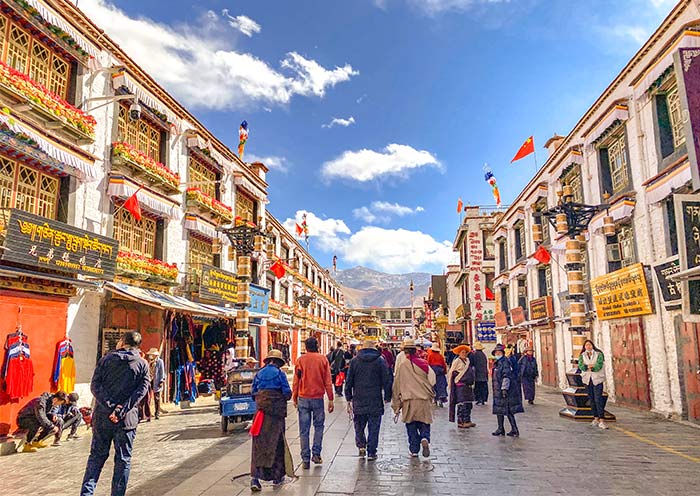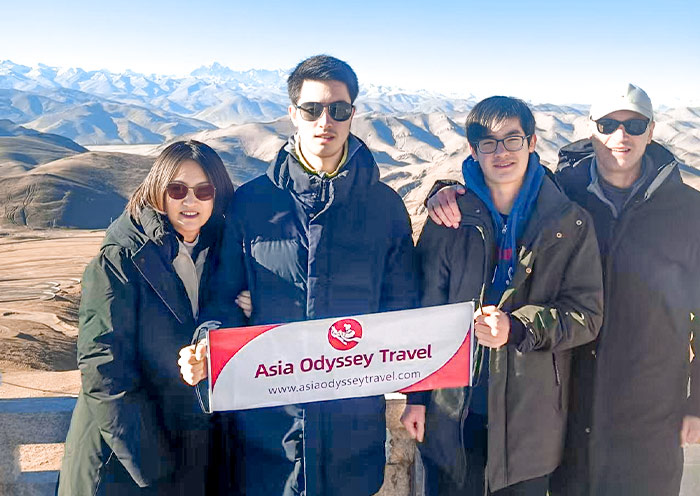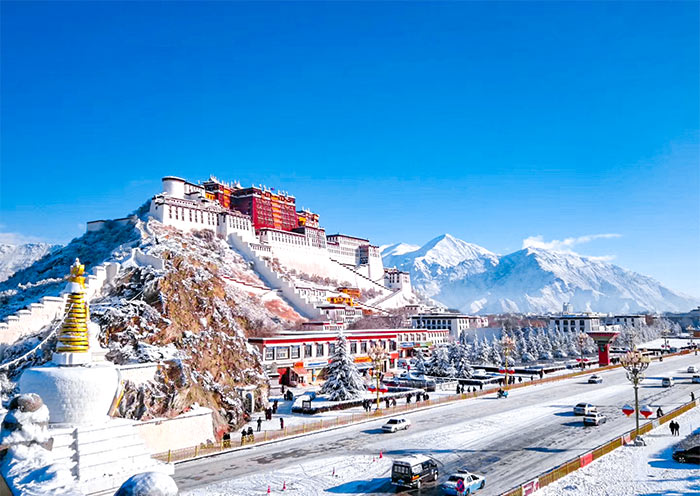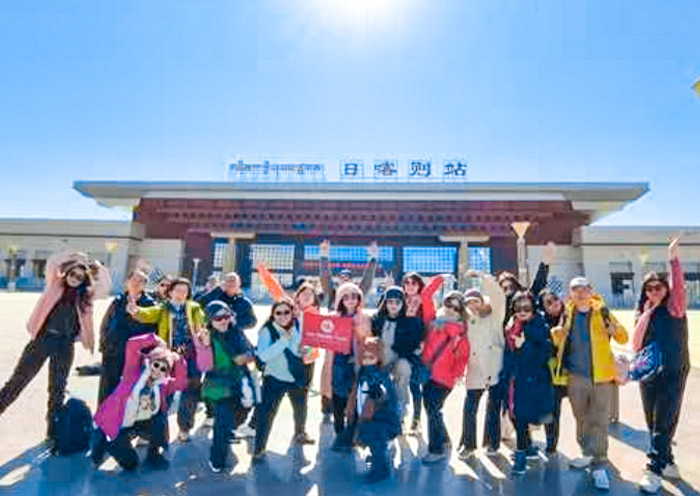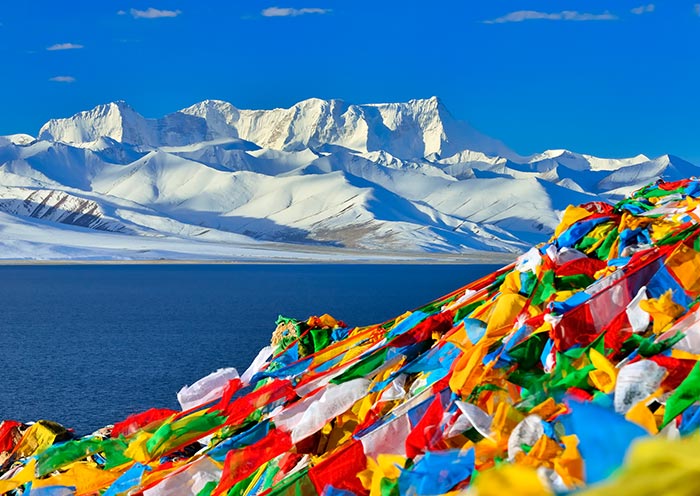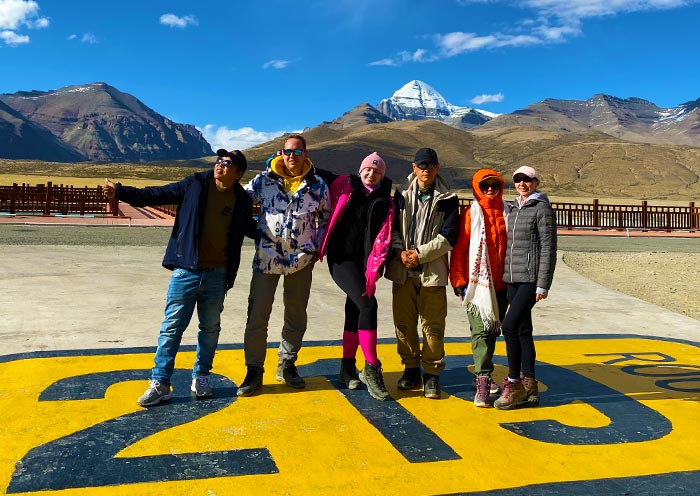History of Barkhor Street, Lhasa
Barkhor Street has a rich history that dates back over 1,300 years. Barkhor Street is believed to have been built in the 7th century when King Songtsen Gampo constructed the Jokhang Temple, one of the most sacred sites in Tibet. In order to express their respect for the king, people built four houses for Songtsen Gampo and his ministers and concubines to live in. These were the earliest four palaces of Barkhor Street and the first batch of buildings. After the completion of the Jokhang Temple, pilgrims and believers from all over the world flocked to the area, and gradually, eighteen family-style buildings were built around the temple to provide accommodation for those who came from afar to pay homage to the Buddha or to do business.
Several hundred years later, especially in the fifteenth century, the Jokhang Temple became the center for spreading Buddhism, and around it, some buildings such as monks' dormitories, religious schools, and small temples appeared. Many devout Buddhists migrated to live around the Jokhang Temple, and accordingly, supporting facilities, stalls, shops, and handicraft workshops also developed. Now, Barkhor Street is a vibrant and bustling area, attracting visitors to experience its unique culture, customs, and history.

Why Called Barkhor Street
The name "Barkhor" is derived from two Tibetan words. "Bar" means "outside," and "khor" means "circuit" or "circumambulation." Barkhor Street is named after the clockwise circuit or circumambulation that pilgrims make around the Jokhang Temple, which is located at the heart of the street. The street itself is also designed in a circular pattern, which further emphasizes its connection to the tradition of circumambulation in Tibetan Buddhism.

Barkhor Street Kora
Lhasa has three circular routes, known as Nangkhor, Barkhor, and Lingkhor. These three circular routes, from the innermost to the outermost, are considered the traditional pilgrimage routes for Tibetan people during their ritual practices. The outer wall of the Jokhang Temple is surrounded by a circle of rooms known as "Barkhor", and the streets branching out from the temple are called "Barkhor Street" or "Eight Corners Street." Barkhor Street is part of the Lhasa kora route, where devotees, pilgrims, and tourists walk in a clockwise direction around the Jokhang Temple while praying, spinning prayer wheels, or prostrating themselves as a sign of devotion. When visiting the Jokhang Temple, it is a must to stroll on Barkhor Street to experience the unique scene and immerse oneself in the spiritual atmosphere.
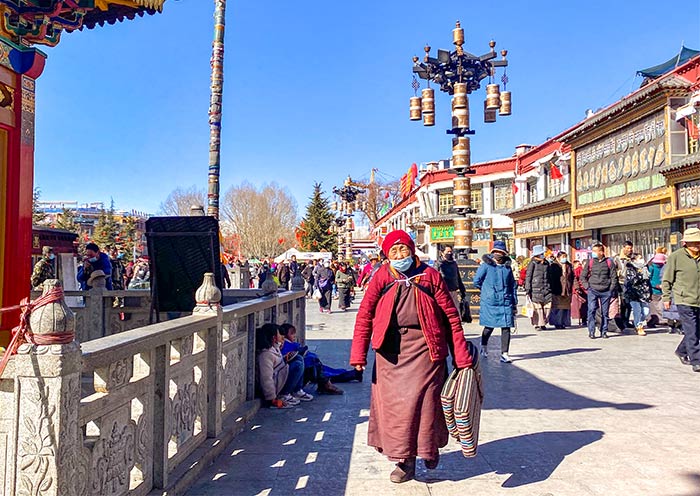
Barkhor Street Bazaar & Shopping
Barkhor Street is a famous commercial center in Tibet and an important hub for goods distribution. Currently, there are over 120 handicraft shops and 200 stalls in Barkhor Street. For tourists visiting Lhasa, Barkhor Street is an essential destination where the history and current state of Tibetan ethnic handicrafts are vividly exhibited.
Barkhor Street serves not only as a holy kora route but also a vibrant bazaar that draws both locals and tourists. The bazaar offers an array of traditional Tibetan handicrafts, clothing, jewelry, religious artifacts, and local delicacies. You can discover distinctive souvenirs, such as thangkas (Tibetan Buddhist paintings), prayer flags, prayer wheels, and Tibetan rugs, among others.

Barkhor Street Dining & Restaurants
When coming to Barkhor Street, it is recommended to try local Tibetan cuisine. There are many small food stalls and vendors that sell traditional Tibetan snacks, such as momos (dumplings), thukpa (noodle soup), and yak butter tea. You can also find vendors selling roasted barley, dried fruits, and other local specialties.
For those seeking a more formal dining experience, there are restaurants that specialize in Tibetan cuisine, such as yak meat dishes, butter tea, and tsampa (roasted barley flour). Exploring the local culinary scene is a great way to immerse oneself in the culture and traditions of Tibet. So, be sure to try out some of the local Tibetan delicacies during your visit to Barkhor Street. Additionally, there are Chinese and Western-style restaurants that offer a wider variety of dishes to choose from.

Location & How to Get to Barkhor Street
The Barkhor Street is located in the city center of Lhasa, making it easily accessible by bus or taxi. And it can be very easy to walk from your hotel to Barkhor Street.
Distance to Potala Palace: about 2 km, 20-30 minutes by walking
Distance to Sera Monastery: about 7.3 km, about 25 minutes by driving
Distance to Drepung Monastery: about 10.4 km, about 35 minutes by driving
Travel Tips for Visiting Barkhor Street
1. Respect local customs: When walking along the kora route, always walk clockwise and avoid wearing revealing clothes or hats when visiting the Jokhang Temple.
2. Acclimate to the altitude: Lhasa is located at a high altitude of around 3,650 meters (11,975 feet) above sea level. Give yourself time to acclimate to the altitude before undertaking any strenuous activities like the kora.
3. Dress appropriately: Wear suitable clothing to protect yourself from the strong sunlight, but do not wear hats when visiting inside the Tibetan monasteries. Additionally, women should avoid wearing skirts when visiting here.
4. Bargain when shopping: When shopping in Barkhor Street's markets, bargaining is expected, so don't hesitate to negotiate prices with vendors.
5. Watch out for pickpockets: Like in any busy tourist area, there may be pickpockets in Barkhor Street. Keep an eye on your belongings and be cautious when in crowded areas.
6. Respect photography restrictions: Some monasteries and temples may have photography restrictions, so be sure to check before taking photos in these areas.
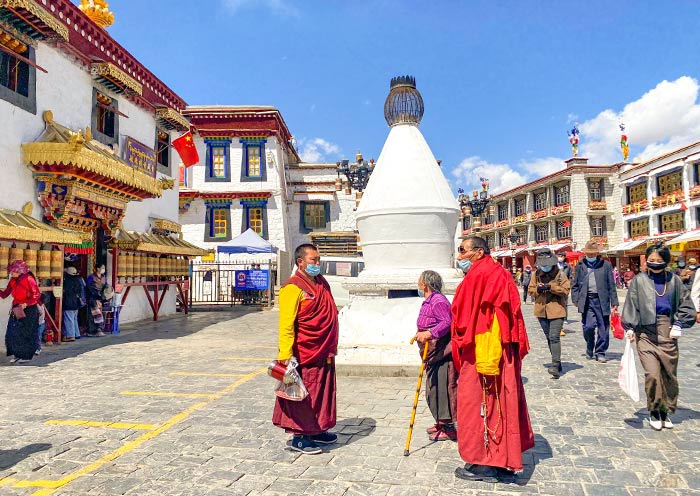
Places to Visit around Barkhor Street
Potala Palace
Potala Palace is a world-renowned attraction and an iconic symbol of Tibetan culture and history. Located in Lhasa, the palace stands at an elevation of over 3,700 meters above sea level, making it the highest ancient palace in the world.
The palace is a masterpiece of Tibetan architecture, with its towering white walls and red and gold accents. It is a treasure-house of the best Tibetan artistic works and precious relics, including thangkas, frescoes, statues, and other artifacts that are significant to Tibetan Buddhism.
The Potala Palace was originally built in the 7th century and was the residence of the Dalai Lama until the 14th Dalai Lama fled to India in 1959. Today, it is a UNESCO World Heritage Site and one of the most popular tourist attractions in Tibet.
Learn more about Potala Palace >>
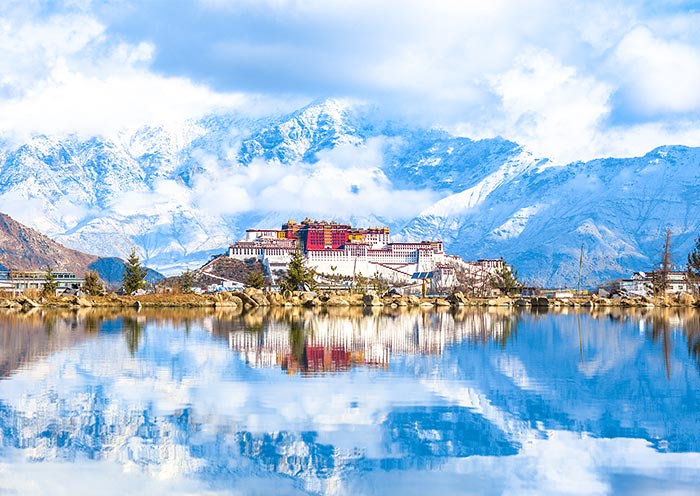
Jokhang Temple
Jokhang Temple, located near Barkhor Street, is an awe-inspiring spiritual center in Tibet, with a rich cultural history dating back to the 7th century Tang Dynasty. The 1300-year-old temple is home to a life-size statue of Buddha Jowa Sakyamuni, and its timeless allure continues to draw pilgrims from all over the world who prostrate themselves in deep reverence. Its stunning architecture, which blends the styles of Tibetan, Tang, Nepalese, and Indian cultures, is a testament to its magnificence and cultural significance.
Learn more about Jokhang Temple >>
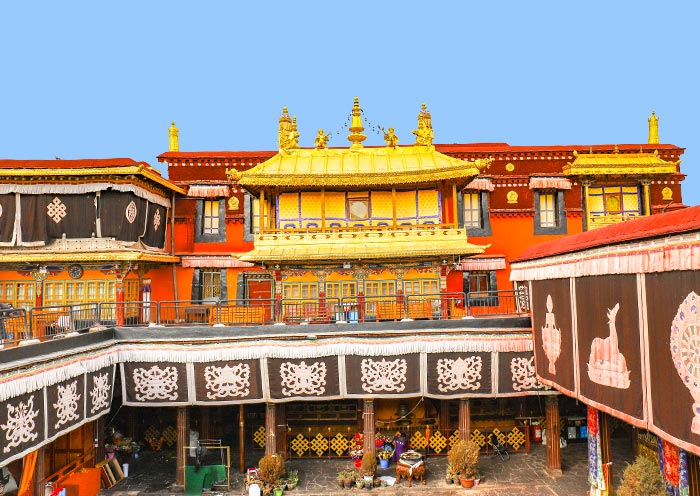
How to Plan Lhasa Tours with Barkhor Street?
In Tibet, foreign travelers are required to explore with a travel agency. A 4-day Lhasa tour or an 8-day Lhasa Shigatse Mount Everest tour that includes a visit to the Jokhang Temple is a good way to experience the key attractions in the region.
A classic day tour of Lhasa typically includes a visit to the Potala Palace, Jokhang Temple, and Barkhor Street. The Potala Palace, built in the 7th century by the 33rd great king of Tibet, is the symbolic place of Lhasa and is home to the gilded burial stupas of former Dalai Lamas and the meditation Cave of the 33rd great king.
After visiting the Potala Palace, visitors can go to the Jokhang Temple, which was founded at the same time and by the same king as the palace. The temple houses the precious treasure of the statue of Buddha Sakyamuni at the age of 12.
Barkhor Street is a busy walking street in Lhasa where visitors can go shopping for various Tibetan handicrafts and souvenirs. Visitors can also join the Kora with pilgrims and locals to explore Tibetan religious culture more deeply.
Explore Tibet with Asia Odyssey Travel
Local based in Lhasa and Tibet over 10 years, our local team at Asia Odyssey Travel has carefully designed Tibet tours that offer a truly authentic and unforgettable experience. You can choose to travel in the comfort of a private tour with a flexible itinerary, or join a group tour that's budget-friendly without compromising on quality. Whatever your preference, Asia Odyssey Travel has a tour that caters to your needs and desires, ensuring that your journey to Tibet is an unforgettable adventure.


